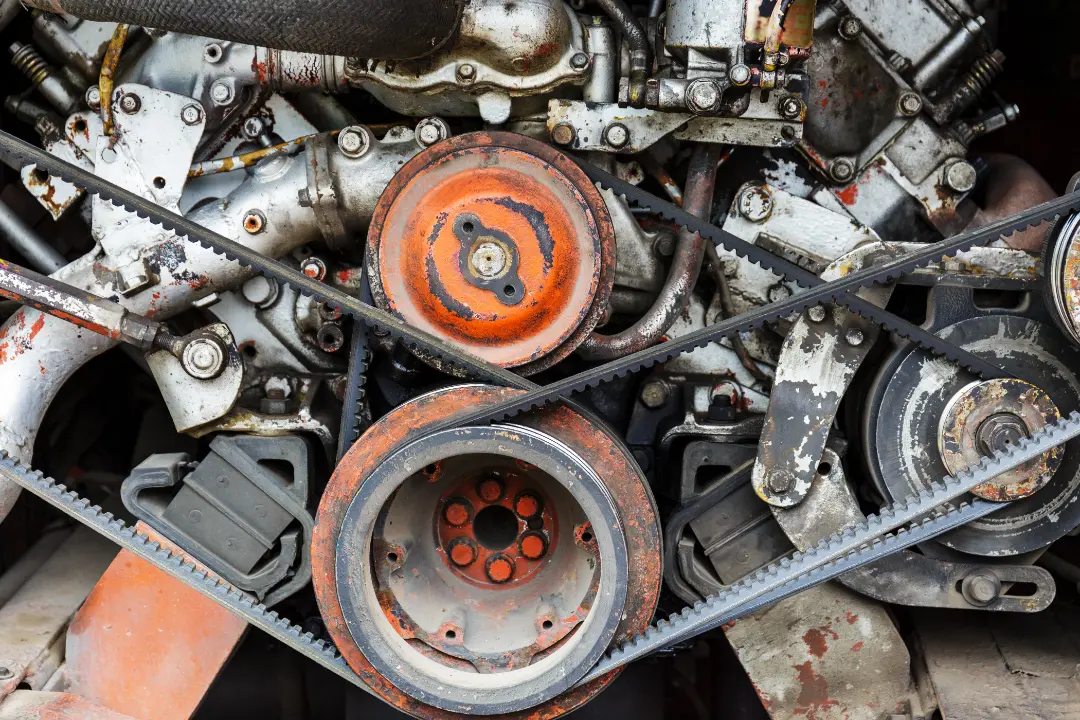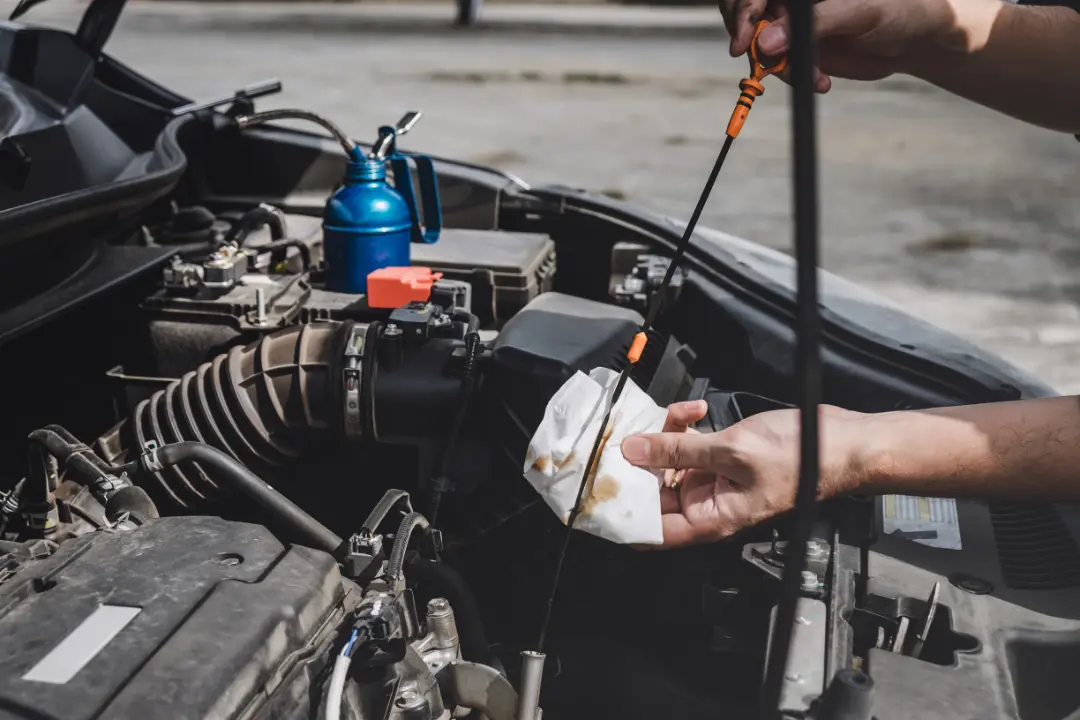When you need to reduce tyre pressure quickly and have no conventional tools in sight, there’s no need to worry. We’ll show you how to remove air from a tyre without a tool, using everyday items as your solution.
This essential skill can be a lifesaver, ensuring your tyres perform safely and efficiently with no fanciful equipment required.
Key Takeaways
- Maintaining proper tyre pressure is crucial for vehicle safety, fuel efficiency, and tyre longevity; improper inflation can lead to increased fuel consumption, reduced tyre lifespan, and compromised handling.
- Manual air release from tyres can be performed without specialised tools. It can be done by using everyday items like a pen tip or a key to press the valve pin, taking precautions to avoid losing the valve stem cap, and monitoring the pressure drop carefully.
- AVS recommends regular tyre maintenance practices such as tyre rotations, wheel alignments, and balancing and offers services like free tyre pressure checks and adjustments to help maintain correct tyre pressure.
Understanding Tyre Pressure Basics
Correct tyre pressure is not just about achieving a smooth ride; it holds far-reaching implications for your vehicle’s safety, fuel efficiency, and longevity of your tyres. Underinflated tyres can lead to a 5% increase in fuel consumption, which not only implies additional fuel costs but also negatively impacts the environment.
A tyre underinflated by just 5 PSI can suffer a 25% reduction in lifespan. Furthermore, incorrectly inflated tyres can compromise your vehicle’s handling capabilities, resulting in longer stopping distances and increased risks of losing control, particularly in wet conditions. Overinflated tyres, on the other hand, reduce road contact and negatively affect handling during cornering.
To strike the right balance, AVS recommends maintaining your car’s tyre pressure between 32 and 35 psi. This ensures even wear and optimal fuel efficiency. Checking your tyre pressure regularly with a tyre pressure gauge and adjusting it as necessary can help you maintain this recommended pressure and ensure a safe and fuel-efficient drive.
When You Might Need to Release Air Without Tools
There are several situations in which you need to release air from your tyres without the use of specialised tools. One such scenario is during significant temperature fluctuations. With the change of seasons or a sudden temperature drop, your tyres can overinflate, requiring you to let the air out to restore proper tyre inflation.
Accidental overinflation is another incident that necessitates releasing air from your tyres without tools. This can happen if you’ve pumped too much air into your tyres, leading to over-inflated tyres that can compromise your vehicle’s handling.
Off-roading adjustments or the need to quickly alter tyre pressure due to environmental changes further underscore the importance of understanding how to release air from your tyres manually. In such situations, the ability to manually deflate your tyres can be a game-changer, enabling you to maintain optimal tyre pressure for the best possible driving experience.
Manual Methods to Release Air from Your Tyres
Now, let’s get down to the nitty-gritty: how do you manually release air from your tyres? The process involves loosening the valve cap, using an improvised item to press the valve pin, and monitoring the pressure drop.
In the following subsections, we’ll delve into each step in more detail.
Using Improvised Items
You don’t need specialised tools to release air from your tyres. Everyday items like a pen tip or a key can serve as an improvised tool to deflate a tyre. The valve stem, a small protrusion on the tyre, is the entry point for air release.
By pressing and holding down on the valve core’s pin within the valve stem using an everyday item, you can effectively let the air out of your tyre.
Safeguarding the Valve Stem Cap
It’s crucial to keep the valve stem cap safe during deflation to avoid losing it. The valve stem cap protects the valve stem and holds the air in the tyres. Misplacing it during the deflation process could lead to the inability to secure the valve stem afterwards. Therefore, it’s advisable to place the cap in a pocket or a small container, such as a plastic bag, during the air release process.
After adjusting the tyre pressure, remember to replace the cap to maintain the proper functioning of the tyre valve.
Monitoring the Pressure Drop
As you release air from the tyre, it’s essential to carefully control the rate to reach the desired pressure level without overshooting the target. To estimate how much air to let out, consider the tyre’s optimal pressure rating and the current tyre pressure level. You can check the pressure drop by observing the tyre’s sidewall flex or by feeling the firmness of the tyre.
This way, you can ensure that the right amount of air has been released by releasing air pressure, achieving the ideal tyre pressure by monitoring the air pressure and avoiding too much air pressure.
All Vehicle Services (AVS) Tips for tyre Maintenance
Proper car tyre maintenance goes beyond understanding how to release air from your tyres. At AVS, a well-established car service and repair garage with over 50 years of combined technician experience, we believe in a comprehensive approach to tyre care that emphasises regular checks and smoother driving techniques for your car tyres.
AVS suggests the following maintenance measures to increase the lifespan of your tyres and enhance your vehicle’s performance:
- Regular tyre rotations, ideally annually or after 7,500 miles
- Checking wheel alignment annually
- Balancing tyres every 6,000 miles or semiannually to avoid uneven tyre wear
Implementing these measures can significantly increase the lifespan of your tyres and enhance your vehicle’s performance.
Besides routine maintenance, the way you drive can also impact your tyres. Gradual acceleration and braking, as advised by AVS, can prolong tyre life and enhance safety. Furthermore, we recommend periodic inspections for tyres, especially those older than five years.
At AVS, we are committed to providing high-quality automotive services to ensure your vehicle is always in top shape.
Adjusting tyre Pressure at AVS
At AVS, we understand the importance of maintaining correct tyre pressure for vehicle maintenance, safety, fuel efficiency, and tyre longevity. To make this task easier for you, we offer convenient home tyre pressure adjustments. Our technicians use portable air compressors to ensure accuracy when your tyres are cold.
To further support our commitment to your vehicle’s performance and safety, we offer the following services:
- Free tyre pressure checks and adjustments
- Monthly checks and adjustments before long trips
- Competitive Pricing
- Free quotes
- Vehicle health checks
These services emphasise the importance of adjusting tyre pressure for varying vehicle loads, especially as tyres lose pressure over time, using tyre pressure gauges.
Precautions When Letting Air Out of Tyres
As you deflate your tyres, remember that safety should be your top priority. Careful handling is essential to prevent manual handling incidents and tool-related injuries. When releasing air, ensure the proper use of the equipment and stand clear of the trajectory to avoid injuries from compressed air.
After deflation, it’s crucial to replace the valve stem cap. This prevents overheating and reduces the risk of a tyre blowout. Both the metal pin when releasing air and the valve stem cap after deflation should be securely fastened to prevent contamination, potential air leakage, and the need for buying a replacement metal pin.
Remember, safety is paramount. By taking these precautions, you can ensure a safe and effective deflation process, maintain optimum tyre pressure, and enhance your vehicle’s performance.
Alternatives to Manual Air Release
While manual deflation methods are handy, specialised tools are available that offer a more controlled and efficient way to release air from tyres. One such air pressure tool is the 4-way valve core tool from Rhino USA, designed to let air out of tyres quickly and efficiently. In addition to this tool, a tyre pump can be used to adjust air pressure as needed.
Another option includes tyre deflator tools, which enable precise control over the air release, preventing excessive deflation. Some tyre gauges even feature built-in bleeder buttons, easing the air release process without the need for additional tools. Using a tyre gauge and these tools can simplify the process and ensure accurate tyre deflation.
Summary
Throughout this guide, we’ve explored the importance of maintaining the correct tyre pressure and how to release air from tyres manually. We’ve also delved into the scenarios where you might need to deflate your tyres without tools and the precautions to take during this process. Furthermore, we’ve highlighted the tyre maintenance tips from AVS and the services we offer to help you maintain optimal tyre pressure.
The ability to manually deflate your tyres and maintain the correct tyre pressure is a valuable skill that can enhance your vehicle’s performance, safety, and fuel efficiency. Whether you’re driving in the city or going off-roading, having this knowledge at your fingertips can be a game-changer.
So, the next time you find yourself with overinflated tyres and no tyre pump in sight, remember these steps and drive away with confidence.
Frequently Asked Questions
How do I manually release air from my tyres?
To manually release air from your tyres, start by loosening the valve cap. Then, use a pen tip or key to press the valve pin and release air. Monitor the pressure drop by observing the tyre’s sidewall flex or feeling its firmness.
When might I need to deflate my tyres without tools?
You may need to manually release air from your tyres in situations such as temperature fluctuations, accidental overinflation, and off-roading. This can be done without tools.
What precautions should I take when deflating my tyres?
When deflating your tyres, handle the equipment carefully to avoid injuries. Afterwards, replace the valve stem cap to prevent overheating and the risk of a tyre blowout. Be safe.
Are there alternatives to manual air release?
Yes, specialised tools such as valve core tools and tyre gauges with built-in bleeder buttons provide a more controlled and efficient alternative to manual air release.
What services does AVS offer for tyre pressure maintenance?
AVS offers home tyre pressure adjustments, free tyre pressure checks, and adjustments to ensure better safety and vehicle performance. These services aim to help you maintain optimal tyre pressure for your vehicle.


